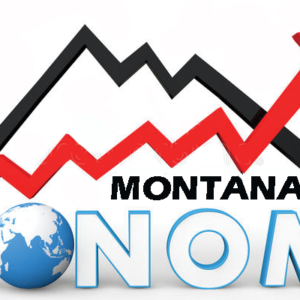Paleontologists have unearthed a new dinosaur species in the Hell Creek Formation of Montana, near Jordan. It has named ‘Captain Hook’ because of a unique hooked claw at the end of its arms. Dubbed Trirarchuncus prairiensis, the new dinosaur was covered with sleek feathers and had two short arms with a long claw at each end that it used to dig or break apart wood in search of insects. It had long legs, with feet that look similar to that of an ostrich and a very long, point snout. The fossilized claws are also more hooked that others found in the past and are from different growth stages, providing experts with a look at how the hook-handed dinosaur changed as it aged.
Whitefish businessman Michael Goguen donated $350,000 in the form of $10,000 checks to the remaining households living in what’s known as “The Annex” portion of the FairBridge Inn in Kalispell. More than 100 guests living in the extended-stay portion of the hotel were given notice by FairBridge on Jan. 12 that they would need to find alternative accommodations by Feb. 12.
The Kalispell Planning Board is recommending approval of Spring Creek Park, a subdivision proposed between Two Mile Drive and Three Mile Drive. Spring Creek Park would encompass 65 detached single-family dwellings, 113 townhome/rowhouse dwellings, and 464 multi-family dwelling units, along with two commercial lots, park area and open space.
The Kalispell City Council approved a conditional-use permit request to turn the FairBridge Inn & Suites and Conference Center into 250 studio apartments. Fortify Holdings, LLC, had requested the permit because their purchase of the property.
Lone Mountain Land Company has announced it is developing a new luxury “resort and residential community” in Moonlight Basin in partnership with a global luxury resort chain. One&Only Moonlight Basin in Big Sky will be developed by Lone Mountain and Kerzner International Holdings, which owns luxury resorts around the world including in Dubai, Mexico, the Maldives and Australia. The resort will include 73 guest rooms and suites, 19 cabins, a ski lodge and several “amenity buildings,” including a spa and dining areas. There will also be 62 private residences in the resort for sale through the One&Only Private Homes brand. The resort will be connected by gondola to Big Sky Resort. Langlas and Associates is the general contractor.
Whiting is adding to its non-operated oil and gas assets in the Bakken. The two assets total 14,563 net acres, and include 32 net undrilled locations. Whiting has said that it expects to develop these undeveloped locations soon. The assets should contribute about 4,500 barrels of oil equivalent per day. This is the second Bakken purchase Whiting has made since emerging from bankruptcy declared during the pandemic. In September 2021, the company closed on an estimated $271 million in additional net acres in Mountrail County, adding 61 new drilling locations to the company’s inventory.
Montana Sen. Steve Daines, who serves on the U.S. Senate Energy & Natural Resources Committee, pressed Biden nominee Laura Daniel-Davis on the failure to restart oil and gas leasing in Montana, despite a federal judge ruling last year that the administration cannot simply suspend oil and gas lease sales while it reviews the program.
The Atlas Power Data Center has announced it’s working with FX Solutions Inc. to build a $1.9 billion cryptocurrency factory in Williston. Missoula, Montana-based FX Solutions is building the facility for Atlas. This plant will be the second such facility for Atlas Power. Its first is in Butte, Montana.
The Hilton Garden Inn located on U.S. 93 South in Kalispell has been acquired by the Veridea Group. Working from offices in Bozeman and Marquette, Michigan, Veridea Group is an commercial real estate and hospitality company. The purchase includes the 144-room hotel, the adjacent 700-capacity conference center, a restaurant, bar and casino. Veridea plans to invest approximately $8 million to undertake a comprehensive renovation of the property.
A congressional bill sponsored by Montana Sen. Steve Daines aims to bolster gateway communities overrun with tourism on federal lands by tapping into federal coffers to address visitation woes. The proposed bill would require a two-prong federal approach to address increased public lands visitation and to combat resulting strains on nearby communities. The bill would require the Interior and Agriculture departments to partner with local stakeholders on fixes using existing federal funding. The proposal secondly would require the agencies to collaborate with state and local partners, and tribes to identify and then address issues like sustainable visitation, housing shortages or troubled infrastructure.
Staack’s Motorsports, 102 E. Galena St., had been sold to Maverick Motorsports of Missoula. Staack’s has been in Uptown Butte for more than 50 years. Missoula businessman Brent Gyuricza , along with his business partner, Guy Sharp, had discussed expansion before, but when the opportunity arose, the two men felt the Butte business would be a perfect match for them.
Chick-fil-A will open at the corner of Custer and North Montana avenues in Helena.
Bozeman Yellowstone International Airport for the 12-month period ending January 31, 2022, it handled 2,020,628 passengers. This is the first time a Montana airport has surpassed 2 million passengers in any 12 consecutive month period. Bozeman Yellowstone International Airport has seen an 82% increase in passengers over the past five years.
MonDak Ag Days is scheduled for March 3-4. The event will be held at the Richland County Event Center and will run from 8 a.m.-6 p.m. on March 3 and 7 a.m.-2 p.m. on March 4. MonDak Ag Days highlights everything agriculture in this region. Educational seminars are also scattered throughout the day. Seminars are usually based on some of the hot button agriculture topics of the times.
Billings Job Service Employer’s Committee (JSEC) is offering Montana a chance for employers and seekers to shake hands and talk about career opportunities. A Jobs Jamboree will be held on March 16 at MetraPark Pavilion in Billings from 11:30 am to 6 pm with early entrance for Veteran’s, Guard, Reserve and their families starting at 11am.
Universal Athletic, a sports equipment and apparel company that has served Montana since 1971, has joined a new national brand, Game One. Universal Athletic and seven other companies embody the Game One which is one of the largest sports equipment and apparel suppliers in the country.
Dr. Ingrid McLellan, President of The Montana Dental Association, has announced that Webb Brown is their new executive director. Brown was most recently CEO of the Montana Regional Multiple Listing Service. In 2018 he retired as CEO of the Montana Chamber of Commerce after 20 years. Brown is originally from Trout Creek. His office will be in Helena.
A Bozeman company that has been recognized by Inc. Magazine as Montana’s fastest growing business, Stone Glacier has been purchased by a large national company, Vista Outdoor. Stone Glacier is a retailer of outdoor and camping gear from apparel and back packs to tents and other supplies. Founder and owner of Stone Glacier, Jeff Sposito, who started the business in 2012, said that being part of Vista Outdoor will give his company access to more resources to keep up with its rapid growth. Vista Outdoor owns 39 different outdoor and hunting brands including CamelBak, Bell, Bushnell and Remington, and has headquarters in Minnesota.
A subsidiary of Bismarck, North Dakota-based MDU Resources Group Inc. has completed an expansion of a $260 million natural gas pipeline in western North Dakota. In addition to adding capacity, the project helps reduce gas flaring in the Bakken region. The subsidiary, WBI Energy Inc. has capacity to transport 250 million cubic feet per day (MMcf/d) of natural gas from the Bakken production area in North Dakota, with the potential to be increased up to 625 MMcf/d through additional compression if needed.
After working for the company for 28 years, Mike Anderson, is now the new owner of Amunrud’s RV Inc in Sidney. The company is the largest parts and services shop in Richland County.
Benefis Health System plans to donate land for a new nursing education building in Great Falls to be built with a portion of a $101 million investment from philanthropists Mark and Robyn Jones, founders of Goosehead Insurance, to Montana State University.
As part of the recent $15.9 million in grants awarded by the Otto Bremer Trust (OBT) nationwide, Big Sky Care Connect (BSCC) was awarded – in collaboration with the Montana Medical Association Foundation – a $100,000 grant to initiate electronic, secure access to real-time health information to improve healthcare for elderly and low-income residents throughout Montana. BSCC feeds patient data from healthcare providers across Montana into a centralized digital network – called a Health Information Exchange (HIE) – which serves as an information portal for some 300 participating providers and payors.
PFL, a marketing technology software company based in Livingston, announced the establishment of its Founder’s Scholarship, which was created in recognition of PFL’s founder, Andrew Field, who retired earlier this month after leading the company for 25 years. Annually, the Founder’s Scholarship will award one graduating high school student from Park County, Montana $2,500 to support their pursuit of higher education.
Butte Heart is a volunteer organization formed to help people from Afghanistan to settle in Butte. Approximately 12 emigrants will be arriving in Butte within the coming months. Butte Heart is backed financially by the Butte America Foundation
After remaining closed for 2 1/2 years, Sidney’s Bowling Alley is now open under new ownership, Dennis and Robin Trudell, Fairview.
The North Dakota Aeronautics Commission reported that the state’s eight commercial service airports ended the calendar with a statewide total of 886,809 airline passenger boardings, an increase of 314,716 passengers or a 55 percent increase from 2020. Williston Basin International Airport ended the year with more than double – 4,892 — the number of passengers in December 2021 than the previous year. In total, XWA reported 46,330 boardings in 2021, 15,000 more than in 2020.






